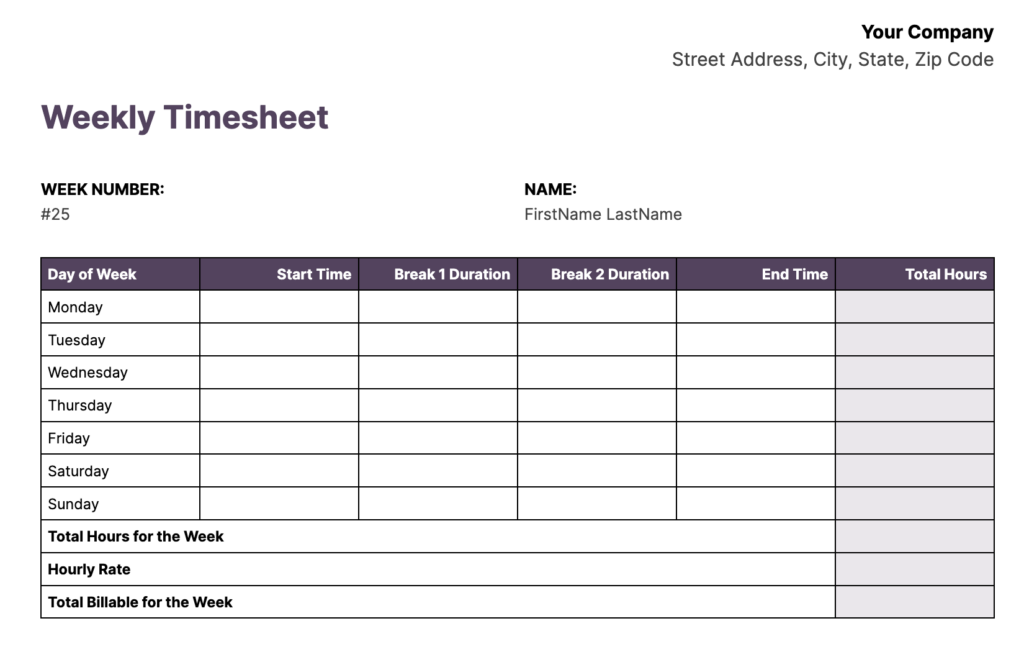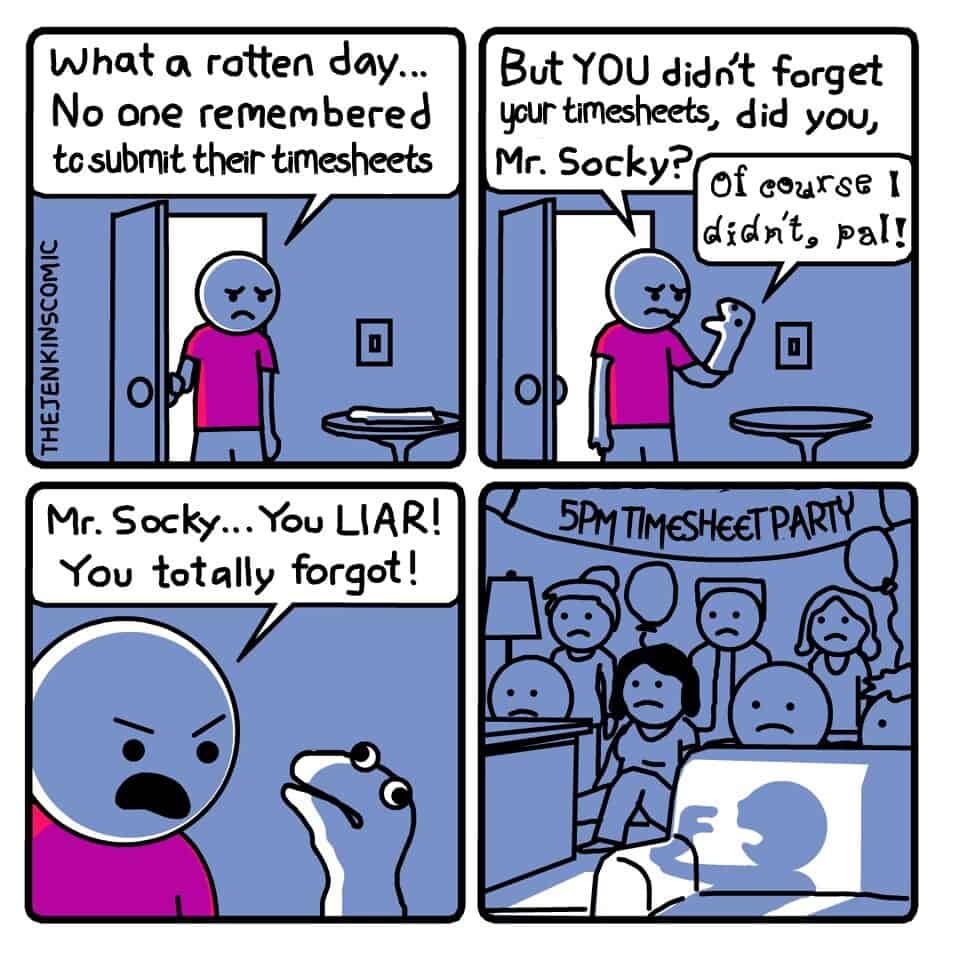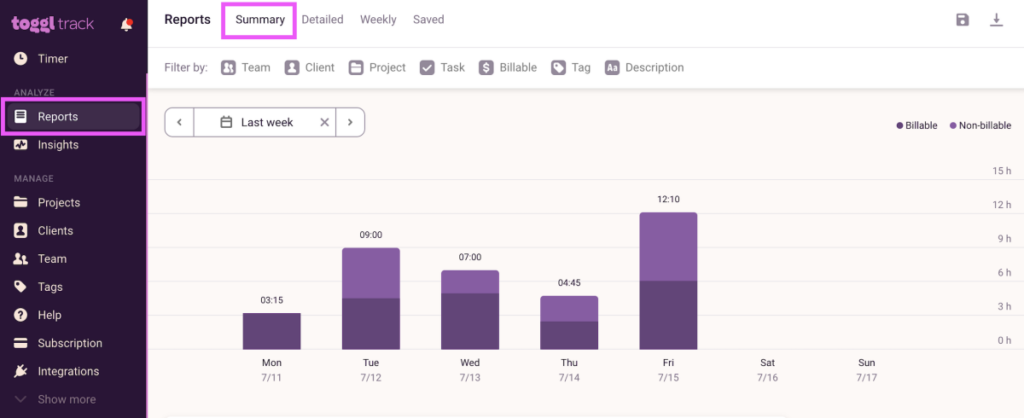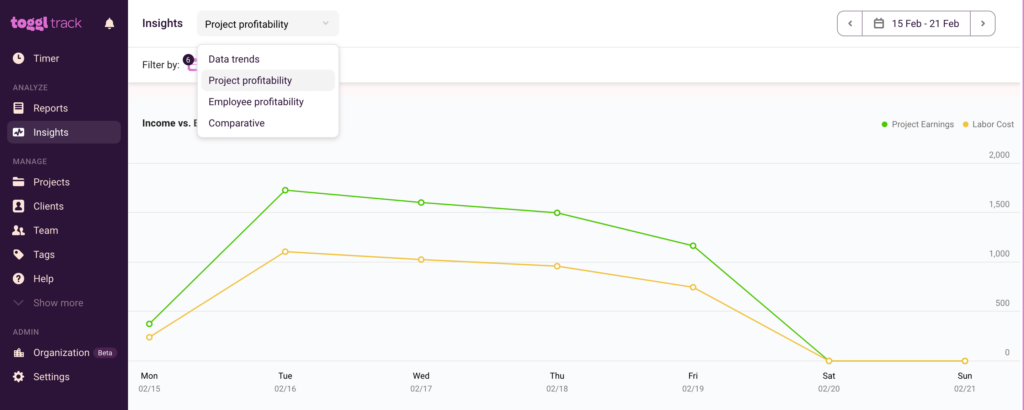Timesheets have long been touted as the go-to method for teams and businesses to track their time. And it’s your timesheet process and culture that can determine whether they help or hinder your team.
But let’s be honest here. Timesheets have a bad rep.
Standard practices around timesheets can be tedious, repetitive, and scrutinous.
But here’s the thing:
The problem isn’t with the timesheets.
It’s with how they’re implemented.
In this guide, you will learn what a timesheet should include, the different types available to you and whether or not they are still effective today.
Let’s dive in!
What is a timesheet?
Timesheets are fillable forms that record the time your team members take to complete their work. That could be hours in a day or billable hours as part of a task within a project.
Timesheets are a massive part of tracking the budget spent for a project and billable hours charged to clients. Having clear and accurate timesheets is invaluable for anyone providing services.
Time is money, baby. 💰
What should a timesheet include?
For accurate time tracking, your timesheet should include typically include the following elements:
- Employee’s name
- Pay period
- Date worked
- Day worked
- Project
- Task
- Hours worked (including regular and overtime)
- Billable or non-billable
- Total work week hours
With traditional timesheet frameworks, users have to enter all the information manually and calculate the time they’ve spent on tasks.
Here’s an example of a weekly timesheet:

Timesheets can also be project specific. And they may look similar to this:

The types of timesheets
Based on what period you want to record, these are the main timesheets you might use:
| Type | Description |
|---|---|
| 1. Project-focused | Tracks how much time you spent on each activity within a project |
| 2. Daily | Ideal for tracking how employees spend their time day-to-day to spot trends and fluctuations and have a precise picture of your progress |
| 3. Weekly | Weekly overview consists of seven days’ worth-of tracking start times, end times, breaks, and overtimes at a glance |
| 4. Biweekly | Typically the same as the weekly timesheet, except it covers 14 days |
| 5. Monthly | In a monthly timesheet, you can typically input your regular hours, overtime hours, and rate for each day of the month |
Want to get started with tracking your team’s time? Check out our free timesheet templates.
Wondering if there’s a better way?
The next section may help you think twice about going the manual route.
Do timesheets work?
Short answer: sort of.
Long answer: Suppose you’re planning to implement a time tracking system. For it to be effective, it needs to be simple and intuitive enough that your team can quickly adopt it.
How?
Let’s look at some of the main benefits of timesheets and what you can do to take them to the next level.
1. Employee billing and payroll processing
Everyone wants to get paid for their work fairly and on time.
But how can you make payroll an intuitive, streamlined process if not by tracking time?
You’re gonna struggle.
Timesheets make payroll processing a breeze for both parties:
- For your team: they don’t have to jump through hoops to ensure they get compensated for their work.
- For you: you don’t have to make assumptions, do complicated math, and hope you’re not making any mistakes.
Use our free timesheet templates or project timesheet template if you’re just starting out.
But even though we think our timesheet templates are great, we know how difficult it is to get your team to track their time daily. Most leave it until the end of the week or even longer…
But if you’re using Toggl Track, your team has plenty of ways to track their time.
They can use it on desktop and mobile and have the option of using two different timer modes: Timer Mode or Manual Mode.
Both help to drastically reduce the inaccuracy of your data–which you will constantly face with manual timesheets.
Once your team is up and running with Toggl Track, you will have access to the data you need for accurate payroll and billing.
Knowledge base: How to track time for a client
You can create shortcuts to your most-used time entries by adding them to the Favorites Bar. This makes it easy to “replay” a task and automatically include all the details you originally entered.
2. Billing clients
Do your clients know what they’re paying for?
Calculating how many hours to charge your clients can be near damn impossible without timesheets to back you up.
How much of the work you did is billable? How do you prove it?
The simplest way to do this with manual timesheets is to collect your team’s timesheets whenever you need them. Every day, week, or month. That’s up to you.
But trying to get your team to submit timesheets can be a bit of a pain…

If you’re using Toggl Track, you can view billable hours per client in the reports dashboard.

You can then filter by specific clients to export the data whenever you need it for billing.
Does your team have different billable rates? Team member-specific rates can be set via the team tab on the projects page. This can also be set per project.
Check out our Billable Rates article to learn more.
3. Project planning and budgeting
Project-specific timesheets can make time management and project management a breeze.
Timesheets replace the guesswork with facts:
- How much time does documentation take?
- Which billable task comes with a hidden unbillable task you should account for?
- How long did this take in past projects?
- Is there a task that takes some employees an hour and others four hours? Can you close the gap?
- How profitable are my projects?
Knowing these answers can help you maintain a balanced workload, maximize employee utilization (without risking burnout), and increase project profitability.
You may have to get incredibly creative to view project profitability metrics in manual timesheets.
But if you’re using Toggl Track, you can track employee hours against project budgets to assess each project’s profitability.
Choose the kind of insight you want to see. You can view Project Profitability, Team Member Profitability, and more.

4. Increase company profits
Timesheets can be key to making your business more efficient and profitable.
Research shows that employees attend 11 to 15 meetings, which translates into an incredible 572 to 780 meetings annually.
Do you know if your employees fall under this statistic?
This is pretty straightforward to figure out in timesheets with a bit of creativity.
You can create an additional row on your timesheet template, call it ‘Utilization Rate’, and then add the following formula to your spreadsheet.
| Total Billable Hours / Total Hours for the Week x 100. |
This will give you the utilization rate presented as a percentage.
Note: Employee utilization rate is the percentage of an employee’s total working hours spent doing work that can be billed vs. non-billable hours.
Alternatively, you can quickly check the utilization rate of each team member inside of, yep, you guessed it, the reports dashboard in Toggl Track.

Perfect for spotting if there is an opportunity for someone in your team to increase their billable hours per day by spotting non-billable time drainers.
Increasing team utilization rates won’t always increase company profits. But it may help you uncover other issues indirectly affecting your projects.
For example, a low realization rate can occur because junior employees tend to be less efficient, so fewer hours are billed. Knowing this may lead you to give that team member some much-needed extra support.
A low realization rate could also mean a misunderstanding of the project’s scope. Your team could be going back and forth on billable and non-billable project tasks due to overall confusion with the project.
Take your timesheets to the next level
Timesheet templates are the simple, easily-accessible option you probably already thought about.
But on the other hand, time tracking tools are the better option when you need access to data that can impact your business profits.
They are intuitive, automated, and able to integrate with broader project management tools for teams and businesses handling more complex projects.
You should carefully consider which time tracking method makes sense for your organization.
But, be warned: your team might not be too happy to hear it at first.
“Not another tool!”
So here are some resources you may find useful when you’re ready to get started with time tracking software:
Searching for the best timesheet app in January 2024? We tested 13 top contenders for a range of business needs and handpicked the ones you can’t go wrong with. Find the perfect match for your business, whether you’re a freelancer, a small business, or a large enterprise!
Sean is a Content Marketer at Toggl. He's been involved in SEO and Content Marketing since 2017. Before working for Toggl, Sean ran SEO at a digital marketing agency—so he's all too familiar with time tracking and project management.



